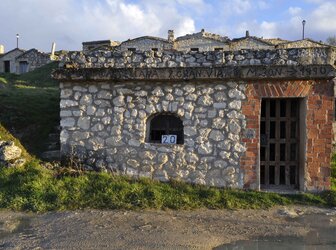The Portal of Glory, Santiago de Compostela
The Portal of Glory of the Cathedral of Santiago de Compostela, created between 1168 and 1188 by Master Mateo at the commission of King Ferdinand II of Leon, is considered a masterpiece of Spanish Romanesque sculpture. For the millions of pilgrims who have travelled to Santiago ...
Read more
Project details
Description:
The Portal of Glory of the Cathedral of Santiago de Compostela, created between 1168 and 1188 by Master Mateo at the commission of King Ferdinand II of Leon, is considered a masterpiece of Spanish Romanesque sculpture. For the millions of pilgrims who have travelled to Santiago de Compostela via the Way of St. James over the centuries, the Portal is the end of a long journey. The scale and quality of its sculptural ensemble and its symbolic, religious significance makes it one of Europe’s most treasured monuments. Over time, the Portal suffered extensive damage due to the effects of environmental conditions, inappropriate conservation techniques, and certain popular customs and traditions. By the mid 2000s, it had become imperative to address its physical deterioration. The preventive conservation and restoration project of the Portal of Glory was jointly led by the Barrié Foundation and the Santiago Cathedral Foundation, with the technical coordination of the Spanish Cultural Heritage Institute (IPCE) and the supervision of the Regional Government of Galicia. Fully funded by the Barrié Foundation, the project has proved how effective private-led initiatives can become in addressing conservation challenges in complex environments. The comprehensive project was carried out over a 12-year period. During the first phase, teams of internationally renowned experts worked developing several lines of investigation, ranging from analyses of polychromy and biodeterioration, or the monitoring of environmental conditions, to the testing of chemical and laser treatment. The extensive research provided a fuller understanding of the state of conservation and the historical significance of the monument, and was the basis of the future preventive conservation strategy and restoration plan. The restoration efforts concentrated on implementing appropriate measures to neutralise the degrading factors and the related damaging processes as well as preserving all the extant polychromy. The intervention followed a conservative approach, based on removing superficial harmful deposits that could affect the stability of the historical materials, such as dirt, salts, biological remains, acrylic accumulations, and unstable mortars placed in previous interventions. The project has managed to unveil the various layers of preserved polychromy, respecting the aesthetic harmony and long history of the monument and ensuring its preservation for future generations.
Similar projects

1904-1908

19th century

12th century

16th century


17th century


13th and 16th century


20th century

18th century

1501






